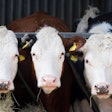
The Feed Phytogenics Market is set to grow from its current market value of more than $600 million to over $790 million by 2024; according to a new research report by Global Market Insights.
Increasing demand for high quality meat products, particularly in the economies of China, India and Brazil, is likely to boost feed phytogenics market, driven by the increased demand for livestock production.
Phytogenics are known to have a wide range of biologically active properties, such as anti-inflammatory, antioxidative, anti-microbial and digestion-enhancement, beneficial in modern livestock production.
These products are used to enhance the performance & health of livestock including ruminants, poultry, swine, and aquatic, basically for meat consumption, the upsurge in which will augment feed phytogenics industry.
Reportedly, the meat sector has increased its investments lately so as to meet the surging demand for high protein meat products for health-conscious consumers, and has seemingly switched to ready-to-eat (RTE) meat products due to easy availability, hectic lifestyles, and rising innovations in meat processing technology.
Reports suggest that in the 2015, the China’s meat production accounted for 28.4% of the total meat production in the world, while the global meat production stood at 86.25 million tons. By adopting advanced meat processing technologies and phytogenic feed additives (PFAs), meat industry players are focusing on increasing their output yield, which would quite overtly prove to beneficial for feed phytogenics market.
Ideally, PFAs are used in the animal industry is to improve the feed quality as well as animal health and performance. The product is considered as a first alternative to AGP (antibiotic growth promotors), mainly due to its antioxidant, antimicrobial, and anti-inflammatory properties. Most reports speculate an optimistic growth in PFA promoting effects on reproduction of milk, egg, and meat.
These products have found wide usage in dairy cow nutrition to enhance the technical properties of milk for cheese and butter production and play a critical role in reacting to a ruminant’s complex digestive and metabolic system. These products also impart anti-oxidative and anti-inflammatory properties to the gastrointestinal tract for the survival of calves. Driven by these incredible benefits, feed phytogenics market is expected to traverse along a positive growth path in the years ahead.
Surging essential oils demand to augment feed phytogenic market landscape
Essential oils (EOs) are widely used as PFAs, due to their strong aromatic features and bioactivity. On account of the volatile and reactive nature of EOs, their effectiveness in animals can be influenced by different conditions during production processes, storage of EOs, and conditions in the gastrointestinal tract of the animals.
Evidence suggests PFAs containing more volume of essential oils can minimize the environmental impact of livestock industry on the atmosphere by reducing emissions of ammonia from pig production, and methane from fermentation in the rumen. Moreover, these products can increase the absorption of amylase and other endogenous enzymes, further increasing the commercialization potential of EO-based feed phytogenics market.
The use of EO-based PFAs offers several benefits to producers, including enhanced animal performance, improved feed efficiency and reduced emissions. According to reports from the animal health and nutrition company, BIOMIN, the overall phytogenic feed additives sector alone is likely to become a billion-dollar industry by 2030. A report from Global Market Insights, Inc., claims essential oils-based feed phytogenics industry size to surpass USD 380 million by 2024.
China to step up as a major consumer in the Feed Phytogenics Market
China is one of the largest beef and sheep meat producers and consumers across the globe. In 2015, the country’s sheep meat production was reported at 4.41 million tons, accounting around 30% of the world’s total sheep meat production, while beef production was reported at 7 million tons, accounting for 10.4% of the global yield, eventually making China as the world’s third largest beef meat producer after Brazil and the United States.
Reportedly, steady domestic prices have attracted investment into cattle farming in the region. Experts suggest that the surge in purchases of meat products by Chinese consumers is expected to remain the main factor driving the China feed phytogenics market in the future. Indeed, China feed phytogenics market size, as per estimates, is forecast to exceed $50 million by 2024.
Highly appreciable benefits of feed phytogenics include, increased growth performance, digestion stimulation, increased feed intake, reduced diarrhea prevalence, improvement in reproductive system and feed efficiency. Quite overtly, the growing occurrence of diseases, rising consumption of meat and increasing healthcare regulations on the usage of antibiotics in animal feed will augment the growth of feed phytogenics market size.
Sourse: Global Market Insights


















